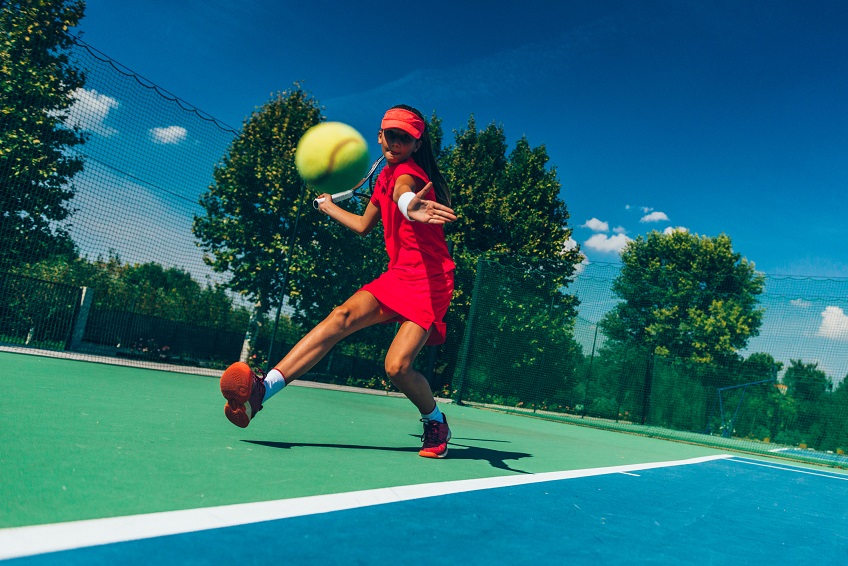
Physical Activity for Strong Bones
Older adults understand the value of strong bones, but we don’t often think about the need for strong bones in children. FitnessGram Advisory Board member Kathleen Janz, EdD, from the Dept. of Health and Human Physiology at the University of Iowa, joins us as a guest blogger to share the importance of bone-strengthening physical activity in youth.
By Kathleen Janz
Many of the benefits associated with physical activity are immediately evident. Aerobic activity reduces excessive fat. Brisk walking improves sleep quality. Sometimes though, the advantages of physical activity are more subtle and the effects are not immediately apparent.
Bone-strengthening physical activity is an example of this. This is common in jumping sports like volleyball, basketball and gymnastics where impact forces load bone during the jump landing. It also occurs in power-based sports like soccer and tennis where muscle forces load bone during dynamic starts and stops. Additionally, unpredictable or odd loading and rest periods between loads can contribute to bone strength.
All of these characteristics can be found in many popular team sports, making sports participation an effective and fun way to combine bone-strengthening physical activity with the other long-term health benefits of exercise. Regardless of your level of competitiveness, playing sports helps build strong bones that are likely to maintain their strength as you age.
Fracture Risk in Older Adults
Outside of traumatic events like a car accident, most bone fractures typically occur in older adults. Sometimes called osteoporotic or fragility fractures, these are considered pathologic fractures because the events that trigger them (like falling while walking) generally would not cause a fracture in healthy bone. Osteoporotic fractures have a significant effect on the health of older adults including pain, loss of function, loss of independence, and even death. About 20% of older adults who experience a hip fracture die within a year.
The effect of physical activity on bone strength is well-studied and considered causal. Scientists are confident that the “right” physical activities increase the amount and distribution of mineral in bone. Distribution matters because having the mineral in the right place minimizes the amount needed and therefore provides lightness without decreasing strength. Balancing lightness and strength is important since the skeleton must be strong to support the body’s weight but also light to allow efficient movement.
Improving Bone Mass
In addition to improving bone structure, bone-strengthening physical activity results in more bone mineral mass. Peak bone mass is the greatest amount of bone mass achieved during late adolescence and early adulthood. Studies of bone development show that physically active children and adolescents consistently have greater peak bone mass when compared to peers. This suggests that for the rest of their lives, these active kids will also have greater bone mineral reservoirs.
Studies unmistakably show that bone-strengthening physical activities are important across the lifespan, but the extent of the response of bone to activity is greatest during late childhood and adolescence.
We typically think about prescribing exercise or recommending physical activity on a daily basis. For example, we might recommend at least 60 minutes of moderate physical activity daily for good health. However, bone-strengthening physical activities don’t have to be done as often nor as long. Three short sessions per week of physical activity can yield significant improvements in bone strength. In fact, studies show that 100 jumps per session can strengthen bones.
Summary
Bone strength is a good reason to participate in sports like tennis, soccer, volleyball, basketball, and gymnastics, although it is seldom considered even by pediatricians or physical educators. Bone mineral mass and distribution appear to track through childhood, adolescence, and adulthood so the healthy bones you build today are likely to protect you later in life. To achieve maximal effects, find activities you enjoy that require impact forces, muscle forces. The more you enjoy it, the more you will do it and the more your bones will thank you.
About the Author:
Kathleen F Janz, EdD, is a Professor Emeritus in the Department of Health and Human Physiology at the University of Iowa with a secondary appointment in the College of Public Health’s Department of Epidemiology. She is renowned for her expertise in physical activity and fitness that promotes bone health and protects against fracture. Learn more about her and the rest of the FitnessGram Advisory Board.
